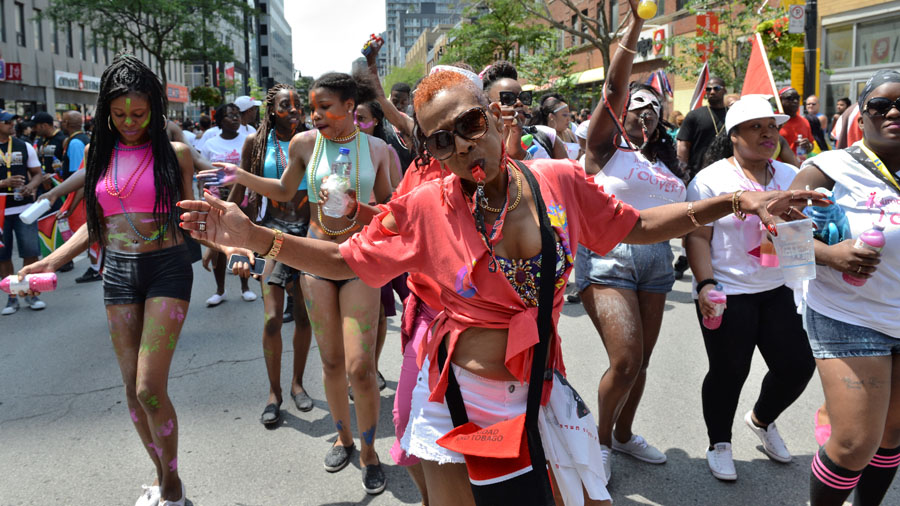Montreal changed a lot after WWII. In 1955, Ottawa set up the Domestic Immigration Program to serve affluent whites looking for maids and housekeepers. The program gave immigrants the right to apply as permanent residents after one year of work, essentially indentured service.
Thousands of West Indian women left their families and jobs as teachers, clerks, and nurses to come here as domestic servants. Black men, however, still found it difficult to immigrate and those sponsored by West Indian girl-friends already here were told they had to marry them within 30 days of entering the country.
Black Montreal: A History
Black Montreal is diverse and growing.
Broadly speaking, there are two prominent groups with little mixing between them: the older segment of the community has roots in Canada, the United States and the English-speaking West Indies while more recent Black Montrealers likely originate in Haiti or French-speaking African countries.
Canadian Black history started long ago. Some historians believe that Libyans may have visited Canada in 500 A.D. and that Africans landed here in the 14th century.
The first recorded Black visitor was Matthew da Costa, in 1606, who is listed as Champlain’s translator, having learned a native language, Mic Mac, on a previous voyage.
It would be a long time between this visit and the beginnings of a real Black community since slavery, of both Black and natives, was legal in Canada until 1834.
Blacks began settling in this country during the American revolution following British promises of freedom and land. They could be considered Canada’s first refugees and were followed by many who escaped during the American Civil War. They first settled in Nova Scotia or Ontario, with some then moving to Montreal.
In 1897 Blacks from Barbados sailed to Gaspe to work in fish plants. They mixed easily with white French Canadians, intermarriage was common, and many changed their names; for example, Woods became Dubois and Flowers, Lafleur.
Compared to European immigration, however, few Blacks entered the country because Canada’s Immigration Act of 1910 specifically restricting non-white immigration.
Ignoring the generations of Blacks already here, government officials argued that they “do not assimilate readily, cannot adapt themselves to our climatic conditions” and were culturally unable to adjust to capitalism!
Those who did enter confronted other restrictions. They could be legally refused service in restaurants and had few choices as to where they might live.
The poorest Blacks lived near St-Laurent boulevard below Pine Avenue (av. des Pins) where rooms rented for $4 a week and flats went for $20 a month. A few who had done well built homes on the South Shore where a hundred foot square lot cost $50.
Many successful Blacks were members of The 400 Club, for “blacks and lights, not blacks and whites.”
However, nine out of ten families lived in the Saint-Antoine district, near the railway stations and yards. Whites called the area the West End or the Montreal Negro District (younger Blacks simply called it downtown).
The choice jobs were on the railroads. The American-owned Pullman Palace Car Company, which built and managed the railway sleeping cars, only hired Blacks to serve the predominantly white passengers.
Whites couldn’t work as porters, but Blacks weren’t hired as engineers or conductors.
Even well-educated Blacks worked the railways since most were barred from the profession. McGill wouldn’t accept Blacks to study law or medicine so the brightest in the community furthered their studies in the United Sates – few came home.

Carifesta Montreal | Held in July since 1975, Carifiesta Montreal -Carifête in French- celebrates Montreal's Caribbean community with beautiful costumes, steelpan performances and vibrant parade participants.
The community’s population fluctuated during summer when single men came from the United Sates to work on the railways or at one of Montreal’s four race tracks. From 1919 to 1933 the United States imposed prohibition which restricted the manufacture and sale of alcoholic drinks.
Many of these “summer Americans” began staying in Montreal throughout the year rather than returning home. They were soon running nightclubs, gambling joints and prostitution rings in St-Antoine street are which became notorious as the “Sporting District.” Stability came to the area with the arrival of West Indian families.
The women got jobs as domestics and in factories while the men worked on the railways. Most of the early organizations, such as the Union Congregational Church, the United Negro Improvement Association and the Coloured Woman’s Club, where started by the West Indian community.
In 1920s and 1940s, community leaders formed two unusual cooperatives. The Eureka Association bought property in Saint-Antoine and the Spathodia Association did the same in Ville Emard. Blacks could then buy the property at market rates, but without the prohibitive down payment (usually twice the amount) which they had to pay when they bought from whites.
During the 1930s, the Depression hit Montreal hard and the Saint-Antoine community worst of all. The population declined and many American Blacks left when jobs ended.
Conditions improved in the 1940s. The war brought work to the area; although the government initially decided that West Indians were not really British subjects and could not serve in the armed forces. They were only accepted after the community protested under the leadership of the Union Church’s Reverend Charles Este.



In 1962, racial quotas were removed from the immigration process and the number of West Indian newcomers doubled. Many were well educated and found jobs as skilled workers, managers and professionals accelerating the community’s move out of Saint-Antoine in the 1960s and 1970s.
At the same time, much of the area was being razed for the Ville Marie expressway (highway 720) and urban development. The plans may have been well-intentioned but the disruption to the community was catastrophic. Rebuilding took decades and when it was over the area had a new name – Little Burgundy – but only a few hundred of the pre-development community of 5,000 was still there.
People moved throughout the city. They went to newer buildings in Cote-des-Neiges, Rosemont, Cote St. Paul, Cartierville and Lasalle; to Crawford Park in Verdun and the Norgate Project in Ville Saint-Laurent. Cote des Neiges was particularly popular but as Blacks moved into larger apartment blocks the owners moved out. Services deteriorated and landlords’ agreement ensured that many buildings were sold or rented only to whites.
Although about a third of Montreal’s English-speaking Black community still lives in the Cote-des-Neiges area, the Black middle class has moved to English-speaking area of NDG, La Salle, the West Island and the South Shore.
By Dorothy Williams, author of A Road to Now: A History of Blacks in Montreal
The war did more than provide jobs, it began reducing disparities between Blacks and whites. New federal social assistance programs covered Black families and Black veterans received government help for training and education. They received loans to buy land and homes and many moved to the new Benny farm project in NDG and to other projects in Ville Saint-Laurent and Montreal North.
Unions, which had grown during the war, made it harder to discriminate in the factory. They also forced the railway companies to end racist hiring policies, increase wages, and promote Blacks. However, when railways began hiring whites for porter jobs, fewer Blacks were needed.
Perhaps the best symbol of these post-war changes was the arrival of Jackie Robinson, the first Black to play major league baseball. An American, he signed with Brooklyn Dodgers in 1945 and came north to their triple A team – the Montreal Royals. Today, Robinson’s statue stands by the Olympic Stadium.